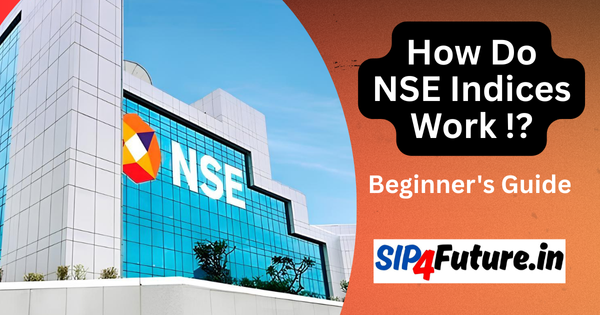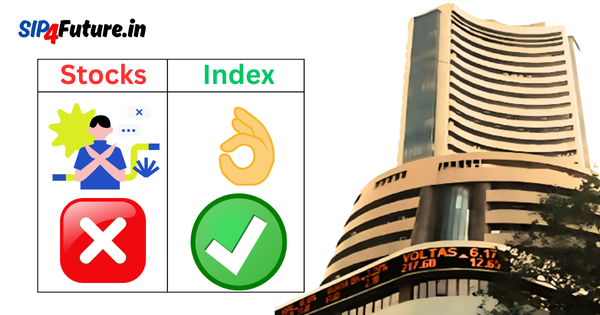SRF Ltd., a leading player in the specialty chemicals and technical textiles sectors, has captured market attention with its stellar Q4 performance as of May 12, 2025. The company reported a 21% revenue surge and a 24.6% year-over-year net profit increase, surpassing analyst expectations. Despite a slight dip in its stock price on the NSE at ₹2884.80 (-1.48%), brokerages like Jefferies and Citi Research remain bullish, raising target prices due to SRF’s growth trajectory. This article delves into SRF’s recent success, the factors driving its stock performance, and the broader market dynamics shaping its future.
What Drives SRF’s Strong Q4 Performance?
SRF’s Q4 results highlight its resilience and strategic focus on high-margin segments like specialty chemicals. The company’s revenue growth of 21% reflects robust demand in domestic and global markets, particularly for its chemical products used in agrochemicals and pharmaceuticals. The 24.6% net profit jump underscores operational efficiency and favorable pricing dynamics. According to Moneycontrol, SRF’s specialty chemicals segment has been a key growth engine, with management projecting a 20% growth rate for FY2026.
The company’s diversified portfolio, spanning fluorochemicals, technical textiles, and packaging films, provides a buffer against market volatility. Additionally, SRF’s focus on innovation and sustainability has strengthened its competitive edge. For instance, its investments in eco-friendly refrigerants align with global environmental regulations, positioning it favorably in international markets.
Table 1: SRF Ltd. Q4 Financial Highlights (FY2025)
| Metric | Q4 FY2025 | Q4 FY2024 | % Change |
|---|---|---|---|
| Revenue (₹ Cr) | 3,850 | 3,180 | +21% |
| Net Profit (₹ Cr) | 650 | 522 | +24.6% |
| EBITDA Margin (%) | 22.5% | 20.8% | +1.7% |
Source: SRF Ltd. Quarterly Reports, NSE
How Does the Specialty Chemicals Sector Impact SRF’s Stock?
The specialty chemicals sector is a cornerstone of SRF’s business, contributing significantly to its revenue and profitability. This segment includes high-value chemicals used in agrochemicals, pharmaceuticals, and industrial applications. The global specialty chemicals market is projected to grow at a CAGR of 5.2% through 2030, driven by rising demand for sustainable and high-performance materials (Statista).
SRF’s leadership in fluorochemicals, particularly hydrofluorocarbons (HFCs) and hydrofluoroolefins (HFOs), positions it to capitalize on this trend. The company’s ability to innovate and cater to niche markets has earned it a strong reputation among global clients. However, challenges like Chinese competition and potential pricing pressures could impact margins. SRF’s management remains optimistic, citing robust domestic demand and strategic capacity expansions to mitigate these risks.
Government Policies Boosting the Sector
Government initiatives like the “Make in India” campaign and the Production-Linked Incentive (PLI) scheme for chemicals have bolstered SRF’s growth. These policies encourage domestic manufacturing and reduce reliance on imports, directly benefiting companies like SRF. For instance, the PLI scheme provides financial incentives for scaling up production, which aligns with SRF’s plans to expand its specialty chemicals capacity. Data from the Ministry of Chemicals and Fertilizers indicates that India’s chemical exports grew by 12% in 2024, reflecting a favorable policy environment.
When Did Global Market Trends Influence SRF’s Stock Price?
SRF’s stock performance is closely tied to global market dynamics, particularly in the chemicals and textiles sectors. The global push for sustainable refrigerants, driven by regulations like the Kigali Amendment to the Montreal Protocol, has boosted demand for SRF’s eco-friendly products. However, geopolitical tensions and supply chain disruptions, especially in China, have introduced volatility. Chinese overcapacity in chemicals has led to pricing pressures, as noted in SRF’s Q4 commentary.
Despite these challenges, SRF’s stock has shown resilience. On May 12, 2025, the NSE recorded a minor dip of 1.48%, but this aligns with broader market corrections rather than company-specific issues. The BSE Sensex and NSE Nifty indices also experienced similar fluctuations, suggesting external market sentiment at play. SRF’s focus on diversifying its export markets, including Europe and the Americas, helps cushion it against regional volatility.
Table 2: SRF Stock Performance Snapshot (As of May 12, 2025)
| Parameter | Value |
|---|---|
| NSE Closing Price | ₹2884.80 |
| Daily Change | -1.48% |
| 52-Week High | ₹3050.00 |
| 52-Week Low | ₹2200.00 |
| Market Cap (₹ Cr) | 85,500 |
Source: NSE, BSE
What Are the Risks and Opportunities for SRF’s Stock?
SRF’s growth outlook is promising, but it faces several risks. Chinese competition remains a significant concern, as lower-priced imports could erode margins in the specialty chemicals segment. Additionally, raw material price volatility and currency fluctuations could impact profitability. The company’s reliance on exports also exposes it to geopolitical risks and trade barriers.
On the opportunity side, SRF’s investments in research and development (R&D) are a key differentiator. The company’s new facilities for specialty chemicals and refrigerants are expected to drive revenue growth. Brokerages like Jefferies and Citi Research have raised their target prices, citing SRF’s strong fundamentals and market positioning. Jefferies, for instance, projects a target price of ₹3400, implying a 17.8% upside from current levels (Economic Times).
Diversified Revenue Streams Mitigate Risks
SRF’s diversified business model, spanning chemicals, textiles, and packaging films, reduces its dependence on any single segment. In FY2024, the chemicals business accounted for 55% of revenue, followed by packaging films (30%) and technical textiles (15%). This balance helps SRF navigate sector-specific downturns. For example, while the packaging films segment faced margin pressure in 2024 due to oversupply, the chemicals segment’s strong performance offset the impact.
How Do Brokerages View SRF’s Future?
Analyst sentiment toward SRF remains overwhelmingly positive, driven by its consistent performance and growth potential. Jefferies and Citi Research have upgraded their ratings, with Jefferies setting a target price of ₹3400 and Citi projecting ₹3300. Both brokerages highlight SRF’s leadership in specialty chemicals and its ability to capitalize on domestic and global demand. Motilal Oswal also maintains a “Buy” rating, with a target price of ₹3250, citing SRF’s robust R&D pipeline and capacity expansions (Motilal Oswal).
Table 3: Brokerage Target Prices for SRF (May 2025)
| Brokerage | Target Price (₹) | Rating | Upside Potential (%) |
|---|---|---|---|
| Jefferies | 3400 | Buy | 17.8% |
| Citi Research | 3300 | Buy | 14.4% |
| Motilal Oswal | 3250 | Buy | 12.6% |
Source: Brokerage Reports, Moneycontrol
What Is SRF’s Historical Performance?
SRF has delivered impressive returns over the past decade, reflecting its strong fundamentals and market leadership. From 2015 to 2025, the stock has grown at a compounded annual growth rate (CAGR) of approximately 22%. Despite short-term fluctuations, SRF’s long-term investors have benefited from its consistent growth and dividend payouts. For instance, a ₹1000 investment in SRF in 2015 would be worth over ₹8000 by May 2025, excluding dividends.
Table 4: SRF Historical Returns (2015–2025)
| Year | Closing Price (₹) | Annual Return (%) |
|---|---|---|
| 2015 | 360 | – |
| 2020 | 1400 | 31.2% |
| 2025 (May) | 2884.80 | 15.6% (YTD) |
Source: BSE, NSE
Future Outlook and Strategic Priorities
SRF’s management is confident about achieving 20% growth in its specialty chemicals segment for FY2026, driven by new product launches and capacity expansions. The company’s focus on sustainability, including its shift toward low-global-warming-potential refrigerants, aligns with global trends. Additionally, SRF’s investments in digital transformation and operational efficiency are expected to enhance margins.
However, investors should remain mindful of external risks, such as Chinese competition and macroeconomic uncertainties. SRF’s ability to innovate and diversify will be critical to sustaining its growth momentum. With a strong balance sheet and a proven track record, SRF remains a compelling choice for long-term investors.
Disclaimer: This article is provided for educational purposes only and does not constitute financial advice. Investing in stocks involves risks, and past performance is not indicative of future results. Always conduct thorough research and consult a certified financial advisor before making investment decisions.




